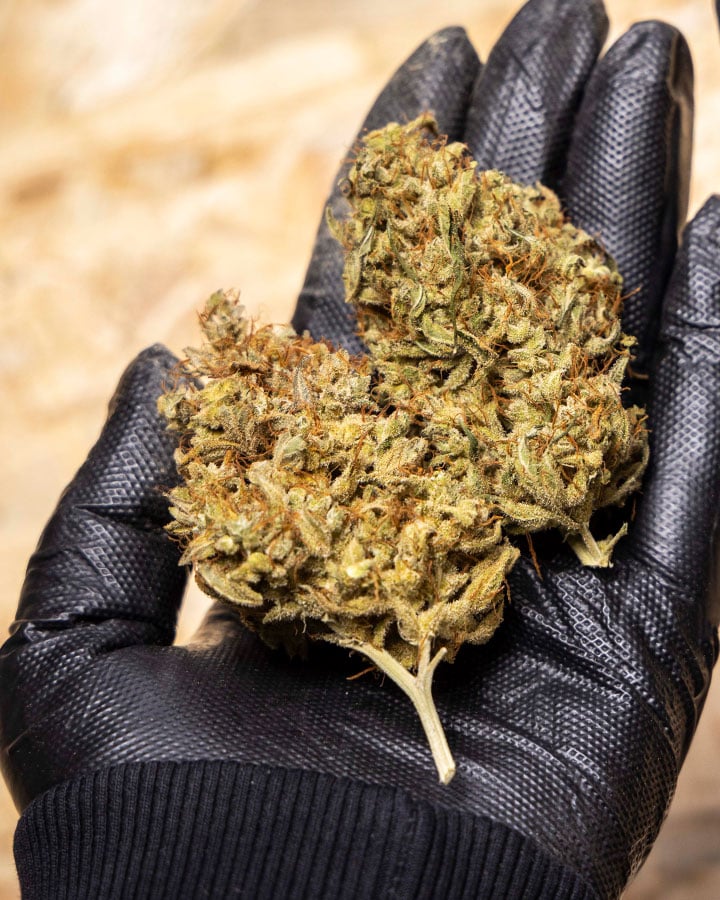Weed in Irpin: Agricultural and Environmental Challenges

Irpin, a rapidly developing city in Kyiv Oblast, Ukraine, is known for its scenic beauty, proximity to Kyiv, and its vibrant community. Located along the Irpin River, this area is also home to a significant amount of agricultural land, with crops such as wheat, corn, vegetables, and sunflowers contributing to the local economy. However, Irpin faces an ongoing challenge that many rural and urbanizing regions encounter: the proliferation of weeds. These invasive plants may seem like a small problem at first glance, but their impact on agriculture, the environment, and public health is far-reaching. In this article, we explore the challenges posed by weeds in Irpin, their economic and ecological effects, and the strategies being implemented to address the issue.
The Agricultural Landscape in Irpin
Agriculture has historically been an important part of Irpin’s economy. The fertile land along the Irpin River and its proximity to Kyiv’s agricultural markets have made it a prime location for farming. Local farmers grow a variety of crops, ranging from cereals like wheat and barley to vegetables such as potatoes, tomatoes, and cucumbers. However, the rise of urbanization in the area has led to a combination of agricultural and residential development, which makes land use more complex and increases the pressure on local resources.
Weeds are a persistent problem for farmers in Irpin. Weeds are plants that grow where they are not wanted, competing with crops for essential resources like water, nutrients, and sunlight. They can spread quickly, overshadowing crops, hindering growth, and even causing soil degradation over time. The increasing expansion of residential areas, combined with the large-scale monoculture farming in the region, has created favorable conditions for weeds to thrive. This, in turn, has caused a significant rise in weed-related problems for local agriculture.
Common Weeds in Irpin
Several species of weeds have become prominent in Irpin’s agricultural fields. Some of the most common weeds include thistles, pigweed, bindweed, and dandelions. These weeds grow quickly and can overtake crop fields if not controlled. Thistles, for example, are known for their spiny leaves and ability to spread via their seeds. Pigweed is another invasive species that grows rapidly and can reduce crop yields by outcompeting them for resources.
The bindweed, a fast-growing vine, is particularly problematic as it can climb over plants, including crops, making them difficult to harvest. Dandelions, though often dismissed as common weeds, can spread quickly through their seeds and disrupt agricultural practices. In addition to these, invasive species like ragweed and Japanese knotweed have been increasingly reported in the area, adding another layer of complexity to the situation.
Ragweed, for instance, is not just an agricultural pest; it also has public health implications. The pollen from ragweed is a potent allergen that causes seasonal allergic rhinitis (hay fever), affecting many people in Irpin. As ragweed continues to spread, it exacerbates respiratory problems, especially during the late summer and fall months. The growing presence of this weed highlights the interconnectedness of agriculture, public health, and the environment in Irpin.
The Economic Impact of Weeds in Irpin
The economic impact of weeds in Irpin is felt primarily by local farmers, who face reduced crop yields and higher production costs as they struggle to control weed growth. Weeds compete directly with crops for water, nutrients, and sunlight, which can lead to stunted plant growth and decreased harvests. For instance, in fields of wheat or corn, weeds like pigweed can overpower crops, leading to a lower-quality yield that has reduced market value.
Moreover, weeds complicate farming practices. Weeds must be managed regularly to prevent them from overwhelming crops, which adds to the cost of production. Additionally, the chemicals can damage the soil and surrounding ecosystems, posing long-term environmental risks.
Labor costs also increase because weeding is often done manually in addition to chemical treatments. For local farmers, this means higher operational costs and decreased profitability.
Environmental Consequences of Weeds
In addition to their economic impacts, weeds in Irpin also have significant environmental consequences. The spread of invasive weed species reduces biodiversity in the region. For example, certain weeds crowd out native plants, making it harder for them to survive.
Weeds also contribute to soil degradation. As certain species grow aggressively, they can deplete the soil of essential nutrients, making it less fertile for subsequent crops.
Furthermore, the spread of weeds can lead to the clogging of local waterways. Weeds like duckweed and water hyacinth can disrupt the natural flow of rivers and streams, which affects both aquatic life and the overall quality of water in the region.
Weed Management in Irpin
To combat the issue of weeds, farmers and local authorities in Irpin have adopted various management strategies. This prevents weeds from establishing a stronghold and helps maintain soil fertility.
Tilling is also commonly used to uproot weeds, although excessive tilling can harm soil structure, leading to erosion.
Herbicides are still widely used in Irpin as a quick and effective method of weed control.
Community Awareness and Future Steps
Addressing the issue of weeds in Irpin requires collective action.
Moreover, there is potential for organic farming to play a significant role in the region’s agricultural future.
Conclusion
Weeds in Irpin represent a multifaceted challenge that affects agriculture, the economy, and the environment.
You’re the best when it comes to marijuana products , always taking care of me. Definitely recommending you to my friends. Thanks for the quick delivery .Really happy with the product .As usual, it’s top-notch. Keep it up you. you can contact them on email Scenthub43@gmail.com and also there Telegram : https://t.me/Scenthub43
wow Thanks for the referral they have great service and got the best weed around. and the delivery is so smooth.

Thanks for always being reliable! I can always count on you for good product.
You’re the go-to in the area for a reason. Always a smooth experience